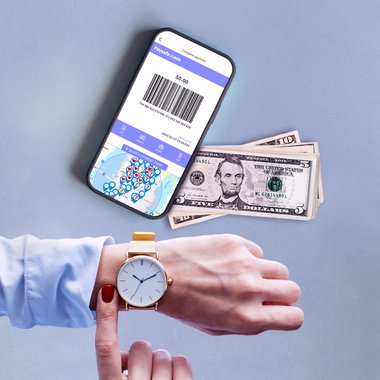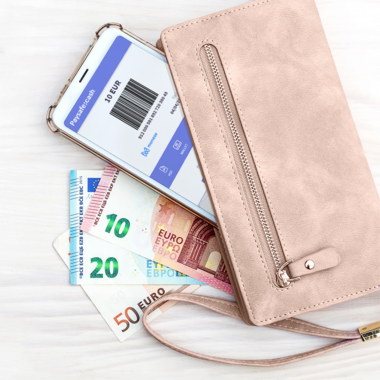Offering more payment choices at the checkout is a must. Here's why.
Jul 01, 2021Consumer habits and expectations continue to change when it comes to online payments. Reacting to this is critical for businesses, and that begins by offering more digital payment methods.

Which payment methods do you accept online?
For many merchants, this doesn’t extend beyond debit and credit cards.
But while these two payment methods have been popular with a large swathe of consumers for a long time, our latest Lost in Transaction data shows preferences are becoming increasingly diverse. And customers have never been more likely to vote with the 'Leave Checkout' button if their preferred payment method isn't on offer.
Here's a look at how customers' attitudes towards online payments are shifting, and why it's never been more important to accept as many different types of payment methods as possible.
An ever more fragmented landscape
While cards have been a mainstay of online payments for almost two decades, our research shows their monopoly is swiftly declining.
In 2018, 43% of those we surveyed told us they'd used a credit card to pay for an online purchase at least once in the previous month. But, in 2020, only 27% said they did so — a 16% drop.
The frequency of debit card usage is also on the wane. In 2020, 32% told us they paid online with a debit card at least once a month, down 1% from 2018.
These drops in usage have coincided with upticks in adoption of alternative payment methods. A growing number of customers have tried prepaid cards, direct bank transfers, e-cash, digital wallets, and even cryptocurrencies for the first time in 2021.
For example, 8% of all consumers used eCash (electronic cash, e.g. paysafecard, Paysafecash) for the first time in the past 12 months and 11% did the same with a prepaid card. eCash was especially popular among Americans – 11% of all consumers used it more frequently in the previous year – and in Germany, with 10% respectively. 16% of the U.S. consumers were keen on using prepaid cards more frequently when making purchases online but lay way behind Italians, of whom 39% decided to pay with this payment option more often.
More to the point, these alternative payment methods have become the go-to choice for a small but significant percentage of customers.
The COVID-19 effect
Needless to say, COVID-19 has had a big hand in realigning customers' payment preferences.
The huge number of business closures due to lockdown restrictions has led to unprecedented numbers of people being put on government assistance or laid off.
At the same time, the pandemic has created a sea of new opportunities for cybercriminals.
According to security company F5 Labs, phishing scams — scams in which criminals pose as a legitimate organisation to harvest payment details — were up 220% at the height of the pandemic. In the UK alone, victims lost £207 million (about $292 million/€241 million). And, in the US, losses added up to an eye-watering $4.2 billion (over €3.5 billion).
This double whammy has re-shaped customers' attitudes towards both convenience and online security.
According to our research, the security of financial data and protection from fraud are the top two concerns for consumers when choosing which payment method to use online.
But the fact that money has become more tight is also influencing some customers' payment choices.
26% told us their payment preferences have changed during the pandemic because they want to be able to track their spending more accurately. And for 32%, whether a payment method is free to use is a top criterion when choosing an online payment method.
Are these changes in payment preferences temporary? Or are we witnessing a long-term shift?
It’s very difficult to predict the future of the industry. As we have seen in the past 12 months, the eCommerce space is still rapidly evolving.
That said, one thing is for sure, whether customers prefer to pay with a credit card, with digital cash, or in Bitcoin, they expect to be able to do so. To the point where, 56% categorically state that they only shop in online stores that accept their preferred payment method.
The message to merchants in the data couldn't be clearer. Unless you accept as many different types of payment methods as possible, you risk losing a significant chunk of your customers to competitors that offer those options.
How to give customers more payment choices, the easy way
If customers are becoming more and more uncompromising when it comes to how they pay online, it's not all bad news.
Accepting more payment methods doesn't have to be expensive or burdensome. By partnering with a single supplier, you can broaden payment choices at the checkout without having to operate several different interfaces, increase your admin, or see your costs spiral.
With Paysafe, for instance, you can access a whole range of payment methods — from debit and credit cards and eWallets to digital cash, direct bank transfers, and other alternative payment methods.
More to the point, working with a single payments partner means you can see all your payments data in one place. And you will potentially have one transparent fee structure and a single point of contact for when you run into issues or need additional support.
It's never been more important to diversify payments at the checkout
It has been suggested that the COVID-19 pandemic has sped up the growth of eCommerce by four to six years. But its impact has been far-reaching, including transforming the typical customer's risk appetite and expectations.
Consumers want more control over their spending and more security, and this means having the final say over how they pay.
So, if you want to attract the broadest range of customers possible to your online store, limited options will no longer cut it.
You must have a payments offering to match.
Disclaimer: The above content is for general informational purposes only and is not attended to address your particular requirements or to be construed as legal, tax, investment, financial, or other advice, nor does any of the above information constitute a comprehensive or complete statement of the matters discussed or the law relating thereto. You assume the sole responsibility of evaluating the merits and risks associated with the use of any information in this article before making any decisions based on it. In exchange for using this website, you agree not to hold Paysafe Group, its affiliates or any third party service provider, liable for any possible claim arising from any decision you make based on the information available to you through this article and this website.



